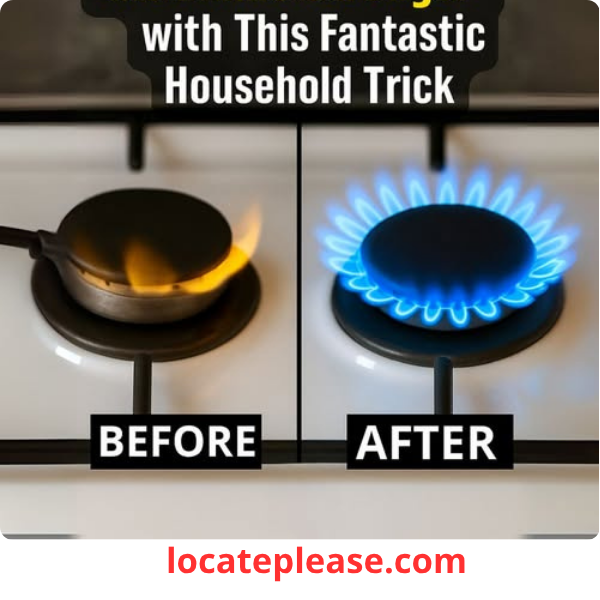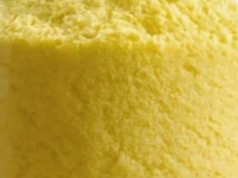Is your gas stove struggling to produce a strong, steady blue flame?
Instead, you’re seeing a weak, yellow, or uneven flame that takes forever to boil water or cook a simple meal?
Before you call a technician or consider replacing your stove, the problem might be simpler than you think:
👉 Clogged stove nozzles.
Over time, grease, food debris, dust, and residue can build up in the tiny gas ports, restricting gas flow and weakening the flame. The result?
- Inefficient cooking
- Uneven heating
- Higher gas bills
- Potential safety risks
But here’s the good news:
You can clean your stove nozzles at home, restore that powerful blue flame, and boost your stove’s efficiency — using just a few common items.
Why a Weak Flame Is a Big Deal
A healthy gas flame should be mostly blue, with small yellow tips.
If it’s yellow, flickering, or lazy, it means:
- Gas isn’t mixing properly with air
- The nozzle is partially blocked
- Combustion is incomplete (which can release carbon monoxide)
Cleaning the nozzles not only improves performance — it’s also a safety upgrade.
Homemade Trick to Unclog Stove Nozzles
This easy, cost-effective method uses simple tools you likely already have at home.
✅ What You’ll Need
- Liquid aluminum cleaner (or a gentle degreaser safe for metal)
- Wooden stick, bamboo skewer, or toothpick (never metal — it can damage the nozzle)
- Toilet paper or a soft cloth
- Small brush (like an old toothbrush — optional)
- Safety gloves (recommended)
🔥 Never use metal wires or pins — they can scratch or enlarge the nozzle, affecting gas flow and safety.
Step-by-Step: How to Clean Stove Nozzles
1. Turn Off & Cool Down
- Turn off the stove and disconnect the gas supply (if possible).
- Let the burners cool completely before handling.
2. Remove the Burner Grates and Caps
- Take off the metal grates and lift off the burner caps and nozzles (the small metal pieces under the grates).
- Set them on a clean surface.
3. Apply the Cleaner
- Place the nozzles on a paper towel.
- Pour liquid aluminum cleaner over them, ensuring it covers the gas ports.
- Let them soak for 5–10 minutes to dissolve grease and residue.
💡 No aluminum cleaner? Use a mix of equal parts white vinegar and water — less powerful, but safe and effective.
4. Gently Clean the Ports
- Take your wooden stick, toothpick, or bamboo skewer.
- Gently insert it into each gas port (the tiny holes around the nozzle).
- Wiggle lightly to dislodge any blockage — do not force it.
🚫 Never use metal tools — they can damage the nozzle or alter gas flow.
5. Wipe and Dry
- Use a strip of toilet paper or soft cloth to wipe away loosened grime and cleaner.
- For stubborn spots, use a soft toothbrush dipped in cleaner.
- Let the nozzles air-dry completely — moisture can interfere with ignition.
6. Reassemble & Test
- Put the nozzles and caps back in place.
- Reconnect the gas and turn on the stove.
- Check the flame:
- It should be strong, steady, and blue
- No sputtering or yellow tips
✅ Success! Your stove is now more efficient, safer, and ready to cook.
Pro Tips for Long-Term Stove Care
🔹 Clean every 2–3 months — especially if you cook daily
🔹 Wipe spills immediately — prevent buildup
🔹 Avoid abrasive cleaners — they can damage aluminum or brass nozzles
🔹 Inspect regularly — a quick visual check can prevent big problems
🔹 Ensure proper ventilation — reduces grease buildup and improves combustion
When to Call a Professional
If, after cleaning, the flame is still weak or uneven:
- The nozzle may be worn or damaged
- There could be an issue with the gas line or regulator
- Internal parts may need professional servicing
Don’t ignore persistent problems — safety first.
Final Thoughts: A Small Fix, Big Results
You don’t need expensive tools or a service call to restore your stove’s power.
With just a few minutes and a homemade cleaning trick, you can:
- Boost flame strength
- Save gas
- Cook faster and safer
So the next time your stove underperforms, don’t shrug it off.
Roll up your sleeves, grab a wooden stick, and give those nozzles some love.
Because sometimes, the best fix isn’t in a toolbox —
It’s in your kitchen cabinet.
Clean nozzles = strong flame = better meals.










